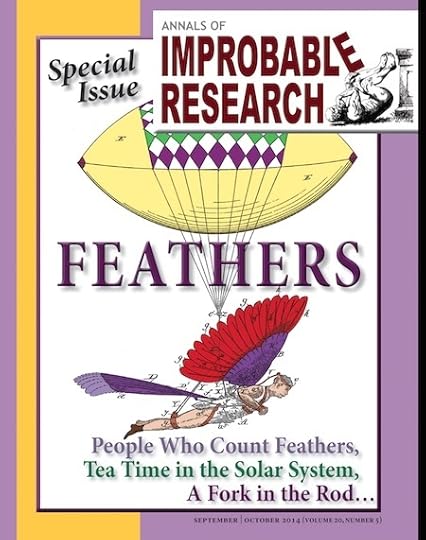Marc Abrahams's Blog, page 364
November 10, 2014
Red Hot Chilli – burns – best avoided
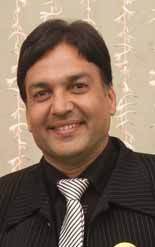 Dr. Pravin Jaiprakash Gupta, MS, FICS, FAIS, FASCRS, FACS of the Fine Morning Hospital and Research Center, Laxminagar, Nagpur, India, presents, in the journal Digestive Surgery, Vol. 24, No. 5, 2007, a paper entitled : Red Hot Chilli Consumption Is Harmful in Patients Operated for Anal Fissure – A Randomized, Double-Blind, Controlled Study.
Dr. Pravin Jaiprakash Gupta, MS, FICS, FAIS, FASCRS, FACS of the Fine Morning Hospital and Research Center, Laxminagar, Nagpur, India, presents, in the journal Digestive Surgery, Vol. 24, No. 5, 2007, a paper entitled : Red Hot Chilli Consumption Is Harmful in Patients Operated for Anal Fissure – A Randomized, Double-Blind, Controlled Study.
“Patients were randomly assigned to receive analgesics and fiber supplement alone (control patients) or consumption of 1.5 g chilli powder twice daily along with identical fiber and analgesics (chilli group). “
“Conclusion: This study shows that consumption of red chillies after anal fissure surgery should be forbidden to avoid postoperative symptoms.”
Note: Dr. Gupta is also known for his invention :
“A surgical device which is called as radiowave gun handle was named after him as ‘Pravin Gupta Procto Gun’ by the famous USA company Ellman International Inc.”

November 9, 2014
Christopher A. Beattie joins the Luxuriant Facial Hair Club for Scientists (LFHCfS) and the Luxuriant Flowing Hair Club for Scientists (LFHCfS)
Christopher A. Beattie has joined the Luxuriant Facial Hair Club for Scientists (LFHCfS) and the Luxuriant Flowing Hair Club for Scientists (LFHCfS). He says:
I am a mathematician working in areas related to computational linear algebra and dynamical systems and I respectfully request consideration for admission to The Luxuriant Facial Hair Club for Scientists. I confess that I am clean shaven (on good days) however, it is on the basis of my eyebrows that I petition for membership. I am confident that I would qualify also for The Luxuriant Flowing Hair Club for Scientists, yet it seems not so much my scalp hair as my eyebrows that have proven capable of sparking interest and conversation (e.g., “Can you actually see through that?” etc.). The causal chain may appear somewhat oblique, yet I am convinced that my eyebrows have aided in disseminating my research and thus have kept it fresh and relevant. On this basis, I request admission to this elite group of hairy scientists. .
Christopher A. Beattie , LFHCfS
Professor, Department of Mathematics
Virginia Polytechnic Institute and State University
Blacksburg,Virginia, USA


Magazine: The special FEATHERS issue is out
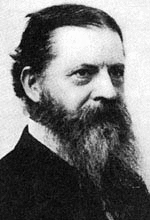 The special Feathers issue (vol. 20, no. 5) of the magazine (the Annals of Improbable Research) is now out!
The special Feathers issue (vol. 20, no. 5) of the magazine (the Annals of Improbable Research) is now out!
Articles include:
“Feathers Research Review“
“Improbable Research Review“
“Improbable Sex“
…and more, more, more, including new helpings of “Improbable Medical Review”, “Boys Will Be Boys”, “Soft Is Hard”, and other outstandingly improbable research snippets from many fields and countries.
We encourage you to subscribe.
Mel (right) says it’s swell.

Bourbaki and the Oulipo
The group of self-chosen elite, somewhat secretive mathematicians called Bourbaki have become the subject, or perhaps the object, of a study in a journal about romance. The study is:
“Bourbaki and the Oulipo,” Jacques Roubaud [pictured here], Journal of Romance Studies, Volume 7, Number 3, Winter 2007 , pp. 123-132. The author, himself a profesor of poetry and former professor of mathematics, explains:
“This article presents the Oulipo or Ouvroir de Littérature Potentielle [Workshop of Potential Literature], its founders, concerns, rules and members. It situates Oulipo in relation both to other literary groups which preceded it, notably the Surrealists, and to the mathematical collective Bourbaki, and gives examples of oulipian work done using mathematical structures.”
BONUS: The Wikipedia page for the word “Oulipo” says:
Oulipo (French pronunciation: [ulipo], short for French: Ouvroir de littérature potentielle; roughly translated:“workshop of potential literature”) is a loose gathering of (mainly) French-speaking writers andmathematicians which seeks to create works using constrained writing techniques.
That Wikipedia page includes this passage as an example of Oulipian writing:
Singular Pleasures by Harry Mathews describes 61 different scenes, each told in a different style (generally poetic, elaborate, or circumlocutory) in which 61 different people (all of different ages, nationalities, and walks of life) masturbate.

November 8, 2014
“doesn’t know his patronyms from his epithets”
Historians, most of them, agonize over how much to trust the work of earlier historians. The Got Medieval blog writes of one terrible bout of agonizing:
… Indeed, a reputation as a bungler who doesn’t know his patronyms (son of the horrible one/Uther) from his epithets (horrible son) is about the best that Geoffrey could hope for during his three centuries in disgrace. Once a historian realizes, as Milton [pictured here] did sometime between 1638 and 1670, that Geoffrey was an outrageously inventive and brazen liar and that his History [a glimpse of which is shown here, below] is almost complete fabrication from beginning to end, repudiation usually gives rise to open contempt. As our awareness of the scope of his lies increases, it becomes increasingly hard to credit Geoffrey with anything original, and this is, in part, the reason so many are willing to hypothesize into existence a vast, internally consistent Arthurian biography floating around somewhere that Geoffrey must have copied down poorly and without giving credit….
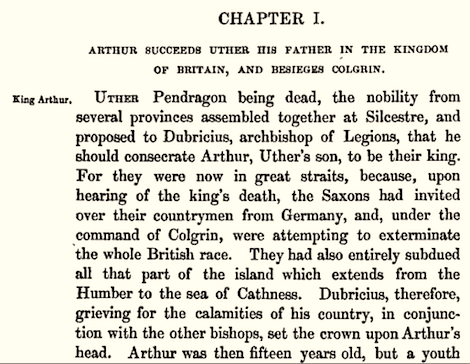

November 7, 2014
Knitting a recursive sweater
“Knitting is usually considered a female activity and females are usually not considered to be inclined to mathematics, or to science in general. Nevertheless mathematical skills are necessary for knitting, because they help to realize symmetries, inversions, scalings and proportions; good abstraction capabilities are indeed needed to figure the final result out and to map the idea of a pattern into a knitted form. Therefore, even illiterate women use mathematics while knitting, without knowing it.”
– explain authors Anna Bernasconi, Chiara Bodei and Linda Pagli of the Dipartimento di Informatica, Universit`a di Pisa, Italy.
Their paper, entitled: Knitting for Fun: A Recursive Sweater appears in : Lecture Notes in Computer Science, 2007, Volume 4475/2007, 53-65,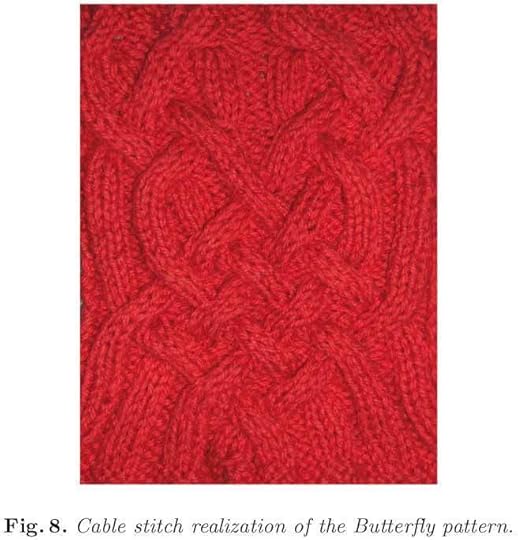
“Computer science, in particular algorithm theory, can suggest a lot of powerful tools that can be used both in descriptive and prescriptive ways and that apparently have not yet been used for creative knitting.”
They add:
“It could be also nice to organize, for educational purposes, an introduction to basic concepts of computer science completely based on knitting, obviously for women only!”
The paper may be read in full here:
Also see: Knitting Mathematics

November 6, 2014
The lamest, grudgingest, non-retraction retraction ever
November 5, 2014
Illuminating Hopelessness Study
“To quantify the potential cost of hopelessness on electricity consumption, we regressed the preference of the ideal wattage for a ceiling fixture onto the hopelessness scale and found that it costs participants on average 20.6% more electricity to feel 1 point less hopeful toward the economy and career prospect.”
– explain Ping Dong and Chen-Bo Zhong of the Rotman School of Management, University of Toronto, Canada, and of Lingnan College, Sun Yat-sen University, Guangzhou, China, in a recent paper for Social Psychological and Personality Science (July 30, 2014).
It’s entitled : Ray of Hope : Hopelessness Increases Preferences for Brighter Lighting
“Across four studies, we found that people who feel hopeless judge the environment to be darker (Study 1). As a consequence, hopeless people expressed a greater desire for ambient brightness and higher wattage light bulbs (Studies 2 and 3).
Study 4 showed the reversal of the effect – being in a dimmer (vs. brighter) room induces greater hopelessness toward the perceived job search prospect”
The results of the studies have clear implications for policy makers, say the team :
“It is worth noting that the ambient brightness may be an effective strategy to light up the hope for people’s future. Thus, during economic recession, increased ambient lighting in public places may rekindle people’s optimism toward the prospect of the economy.”
Also see: Helplessness, Hopelessness, and Haplessness

November 4, 2014
Reinforcing stereotypes: Are men more mechanically adept? [with condoms]
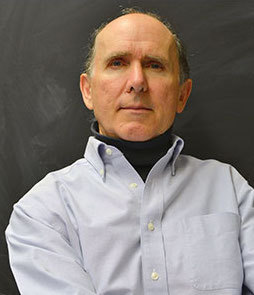 This study stands to reinforce several stereotypes, one of which deals with women’s vs. men’s mechanical abilities:
This study stands to reinforce several stereotypes, one of which deals with women’s vs. men’s mechanical abilities:
“Condoms are more effective when applied by males: a study of young black males in the United States,” Richard A. Crosby [pictured here], et al., Annals of Epidemiology, vol. 24, 2014, pp 868-70. The authors, at the University of Kentucky, the Kinsey Institute for Research in Sex, Gender, and Reproduction, the University of Guelph, Indiana University, and the University of Southampton, explain:
“When it comes to contraception, leave it to the men! Couples may often argue over whose responsibility it is to ‘take precautions’, but it’s fair to say the blame falls on both. Research published in Annals of Epidemiology investigated whether the female application of male condoms during intercourse is associated with higher or lower rates of breakage or slippage. In just under half (43.5%) of cases, young males who regularly let their female partners apply condoms reported one or more instances of breakage or slippage, compared with just 27% of those males who more regularly chose to apply it themselves. The findings suggest the need for education to focus on improving young women’s application and use of condoms.”

Is the thumb a finger? The medical danger of numbering digits
Is the thumb a finger? How many fingers does a person have on one hand? Difficult questions? People have had the wrong finger(s) amputated because some health care workers refer to the digits of the hand by number e.g. first finger, second finger, etc and this can be confusing. Would it not be safer and simpler to refer to digits by thumb, index, middle, ring and little fingers?
This debate has been going on for at least 60 years. See these three papers:
Forbes R. Numbering fingers. BMJ. 1955.
Addison PH. Operating on the Wrong Limb or Digit. BMJ. 1960.
Masukume G. Pointing fingers. CMAJ. 2009.
While this debate has been raging, in this digital age, wrong digits have been lost.
Bonus: There are at least 27 finger counting methods.

Marc Abrahams's Blog
- Marc Abrahams's profile
- 14 followers


